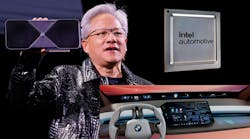Carrier Modifications Make Ultranarrowband Modulation (.PDF Download)
Wireless systems and services occupy bandwidth, which is limited. But not all wireless applications require wide-bandwidth channels. Emerging applications such as sensors for Internet of Things (IoT) functions need just enough bandwidth to move the amount of data generated by the sensor to a communications gateway that is connected to the internet.
For industrial and commercial applications such as these, ultranarrowband (UNB) wireless technology is very attractive as a means of providing a wireless link without occupying a great deal of frequency spectrum. One of the challenges in adopting UNB technology, however, lies in generating the necessary signals—essentially carriers without sidebands.
In modern communications systems, modulated carrier signals occupy fairly wide-bandwidth channels to transfer voice, video, and data. Because of the wide-bandwidth channels, including sidebands, channels must be sufficiently separated in frequency to avoid overlapping sidebands and causes of interference between channels. But UNB-modulated channels, which theoretically have no sidebands and can compress large amounts of data into communications channels as narrow as 1 Hz or less, can be closely spaced while still occupying very little total frequency spectrum.








